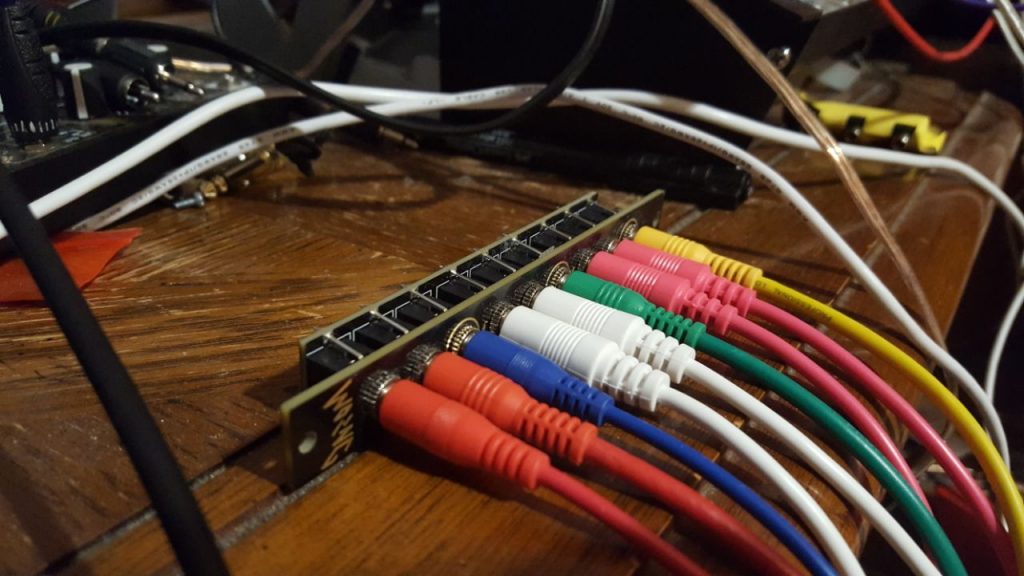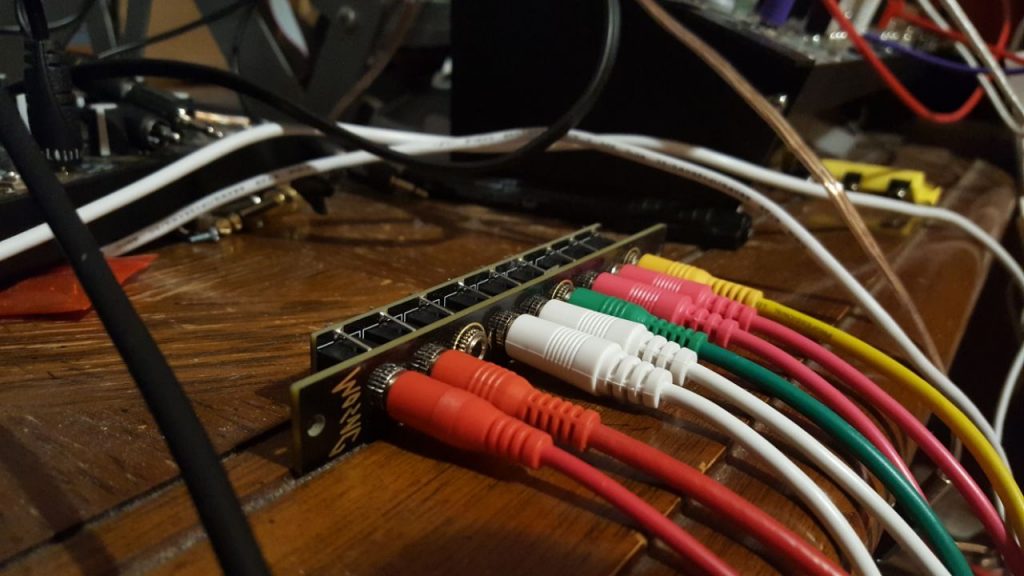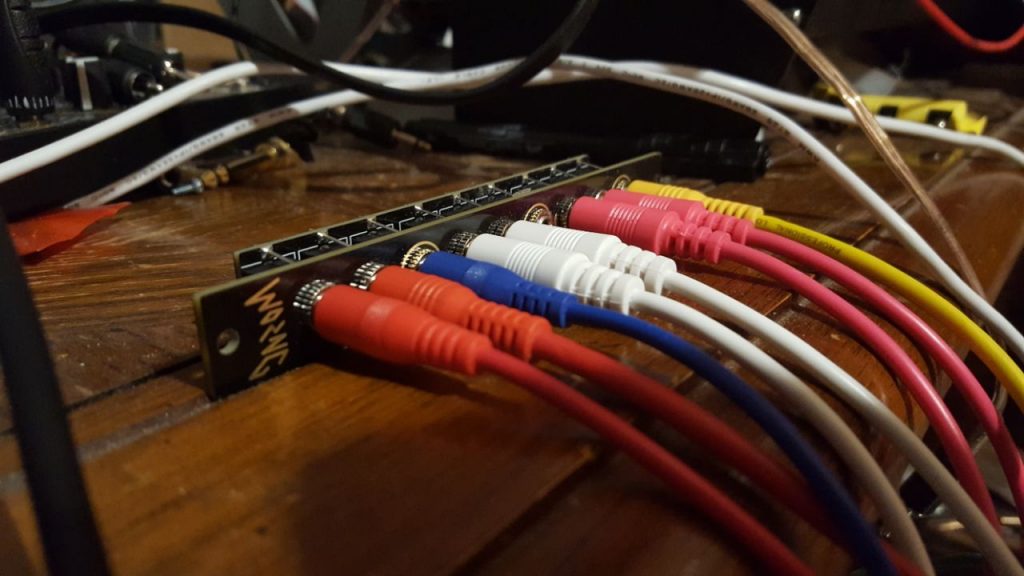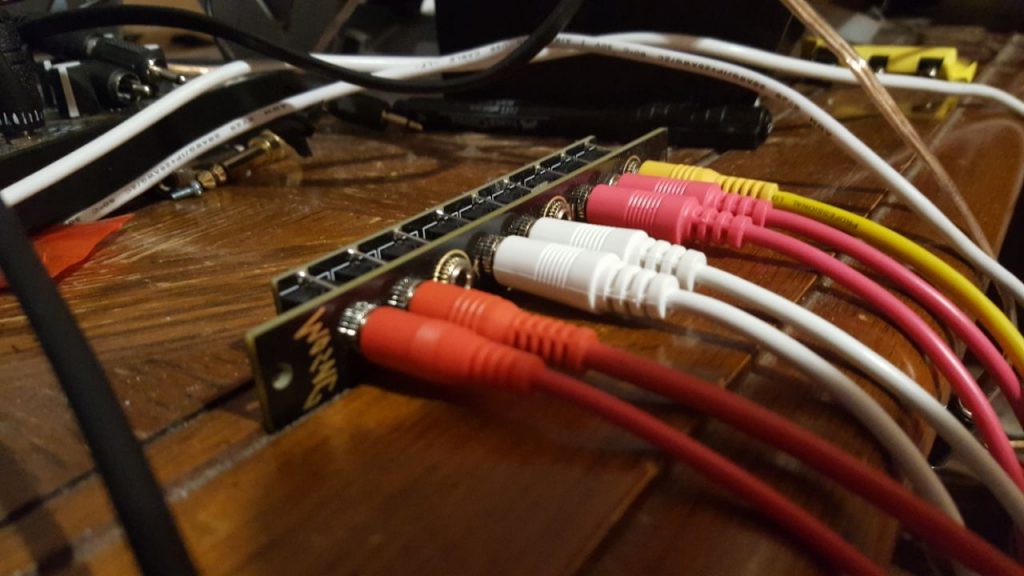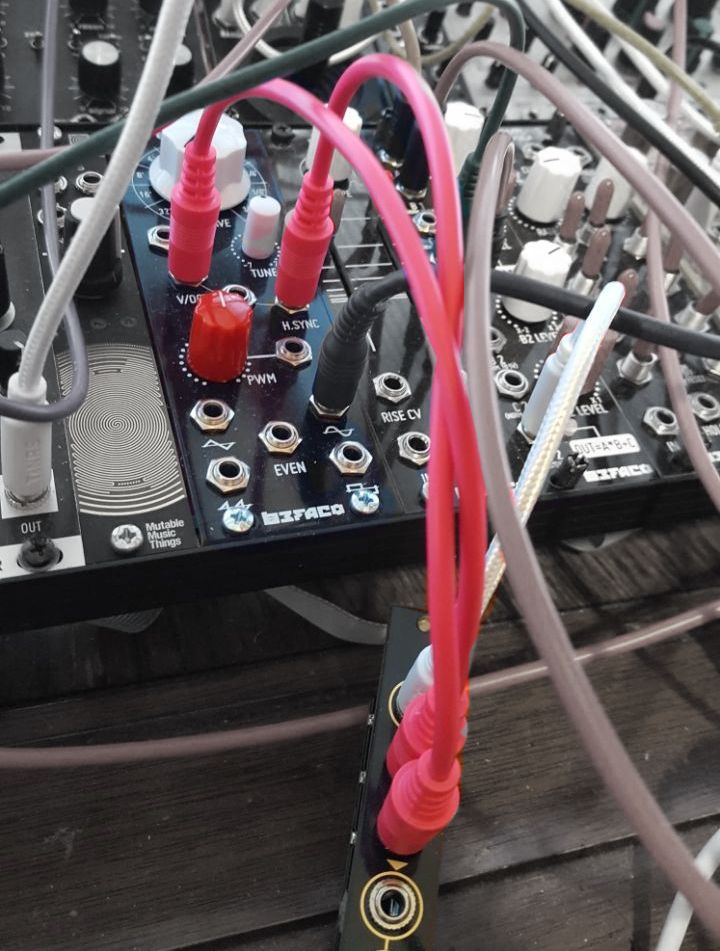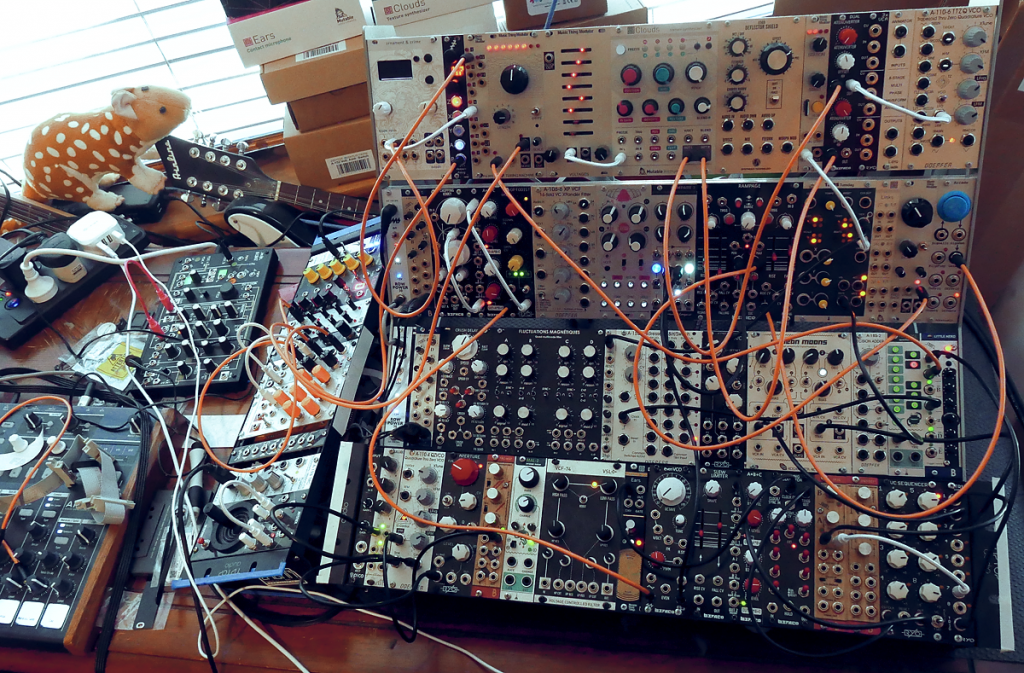Eurorack is very easy to blow the bank on. Not for nothing do people call it Euro-crack. There are hundreds of different modules which do all kinds of different things and it’s very easy to run around like a kid in a candy shop buying anything with pretty blinky lights that makes a vaguely cool sound.
I knew this going in and I wanted to be smarter.
It helps to focus on achieving a particular goal. In my case, I wanted a voltage controlled, chaos-infused mad science lab – something that has minimal overlap with the tech already on my computer. I came up with the following guidelines to help me stay the course.
Analogue signal path wherever possible
Why? I’ve got loads of digital sounds on my computer already. No need to add even more! Analogue gear behaves in more interesting unpredictable ways than digital when pushed and digitisation can add nasty artefacts.
But… pure analogue circuitry can be annoyingly unstable, imprecise and generally fiddly, even when it’s well-behaved and recently built. Re-patching a sound perfectly is nigh-on impossible.
And so I’ve got sample playback (Radio Music and Disting Mk 4), digital delays (Chronoblob, Crush Delay – the Crush is very lo-fi though) and a digital processor (Clouds). The Disting has a nice high sample rate which helps things.
Digital timing for precision, analogue handling for fidelity
Why? DASYRAC needs to be able to hold a tempo for multitrack recording, and digital clocking is steadier. Analogue is generally still better for audio-rate modulation – the sample rate of digital can easily misinterpret or distort rapid signal changes that analogue circuitry deals with perfectly capably.
Surface controls only, preferably with CV
Why? Automation is cool, menu diving without a mouse sucks and multi-functional knobs are too much effort to remember.
But… menus can hide complexity & reduce the module size, leaving room for more modules.
And so… I have the Tuesday procedural sequencer Tuesday, the multifunction Disting mk 4, the clock manipulator Little Nerd, and the texture synthesiser Clouds whose clunky UI so annoyed its inventor that he discontinued it. All of these CPU-based modules require some menu-diving and/or have modes and other stuff. As long as they’re useful and limited in number, they’re fine.
Decoupled from the PC and MIDI-based control
Why? I’ve looked at a screen to make music for 25 years and I’m utterly bored with it. Also being able to separate gate from pitch is awesome. You can’t really do that with MIDI unless the individual instrument lets you. It’s absolutely possible to inject MIDI and computer-controlled CV into Eurorack – I just don’t want to.
And yet… recording and mix is all digital because using analogue recording media as well is pointlessly limiting when it comes time to compile something.
Ephemerality over reproducibility (no presets!)
Why? I am tired of preset surfing and I’m not on anyone’s clock.
But… patching manually is slower, even when you know exactly what you want. Either I record that cool sound or lose it forever, and disk space is ultimately still finite.
And so… Tuesday has hard-coded scale presets, Disting mk 4 has some presets in there too, and Little Nerd can be preset but I don’t use it like that.
Keep single module spend less than A$250 where possible and don’t spend more than A$500 on a single instrument
Why? Eurorack is cumulatively expensive enough as is, let alone high-end Eurorack. Second hand modules are fine too.
But.. in keeping my module selection low cost, I miss out on some very shiny stuff. Really shiny.
And so… The Tuesday, the Make Noise 0-Coast and Korg ARP Odyssey were all north of half a grand. Clouds, Chronoblob, Fluctuations Magnetiques and Deflector Shield were all more than $250 each. None of the DIY modules have been more than $250, though some have come pretty close. 🙂
DIY if it’s feasible, cheaper and equal quality
Why? It’s cheaper – the cost of assembly is a big chunk of the sticker price! It’s doable if not always simple. I get to learn about electronics. Also, soldering on my back patio is a lovely way to pass the time.
But… DIY needs equipment and if a DIY module breaks, I have to fix it myself.
The one time I bailed was.. Clouds! It’s possible to get DIY kits because Clouds is open-source hardware, but it involves a lot of surface mount component soldering. I do not like surface mount component soldering.
Modular components over contained black boxes
Why? Black boxes with no control points are just less fun. If something is part of a system, I prefer it to allow that system to alter what it does instead of just doing its job.. because you never know what you might get it to do. If there’s just an in and an out, well, it had better do something pretty awesome…
But.. black boxes mean less of your system is tied up and you can do more cool stuff at once. It’s a trade-off.
And so.. The Little Nerd doesn’t accept anything except for a clock, but it does cool enough stuff with that clock that it’s OK. The 106 Chorus only has an in and an out but it sounds fab. And the Ladik Waveform Animator.. well.. it’s 4HP of black box yumminess.
Multi-function over single function
Why? A versatile module means you can do more with your system. I’ve noticed that the analogue modules tend to be more versatile in what they can be used for while the digital modules seem to be designed with a specific purpose in mind. A function generator like the Befaco Rampage can do so many things that it beggars belief, which is why it and its better known cousin Maths are in nearly every Eurorack setup there is.
But.. a really versatile module has more chance of being used early in a patch, which means choosing which of its many tricks it will perform for you. The Disting mk 4 has almost 70 different modes, for instance, but I only have one of them so I can only have it do one of those seventy things at once. Maybe I should get another one…
And yet… I don’t mind the odd one-trick pony like the Feedback 106 Chorus or the Ladik Waveform Animator in my rack because they do their job so nicely.
Unpredictable/chaos-guided systems over explicit/periodic instructions
Why? It’s more interesting to build a patch which shape chaos in interesting ways than building up intentional order from nothing. It’s also way quicker to carve away the notes you don’t want with a quantiser than program in the exact sequence of notes you do want. Just saying.
But.. building a nice chaos-taming patch requires more experimentation than plugging notes into a sequencer.
Monophonic over polyphonic
Why? Polyphony means doing more than one thing at once, and that cost more money than just having one thing going at once then multitracking it. Also, years of listening to chiptunes has taught me pretty much every trick in the book when it comes to getting bang for buck out of a single oscillator. And there’s always the option of smearing arpeggios into a drone with a bit of delay or spring reverb.
But.. it makes performing complicated things live much harder. Not that I do live stuff on my rack. It also means a lot more patching.
And so… multitracking isn’t the only answer to this. I can also use samples from DASYRAC itself courtesy of the Radio Music or the Disting Mk 4, both of which have sample playback.
